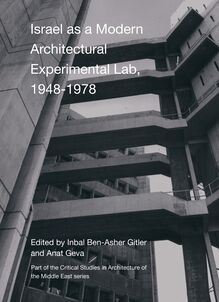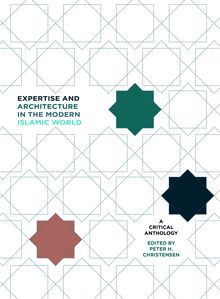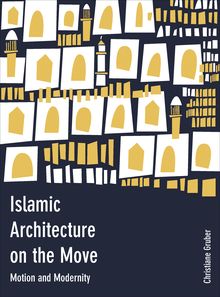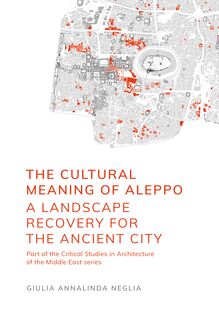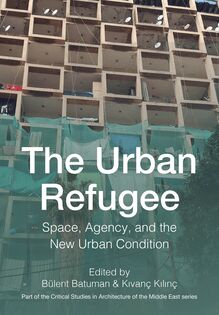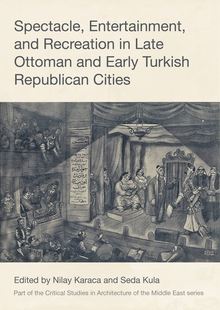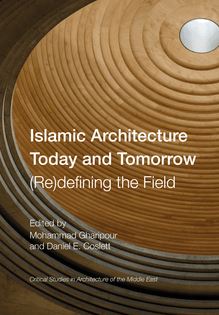-
 Univers
Univers
-
 Ebooks
Ebooks
-
 Livres audio
Livres audio
-
 Presse
Presse
-
 Podcasts
Podcasts
-
 BD
BD
-
 Documents
Documents
-
- Cours
- Révisions
- Ressources pédagogiques
- Sciences de l’éducation
- Manuels scolaires
- Langues
- Travaux de classe
- Annales de BEP
- Etudes supérieures
- Maternelle et primaire
- Fiches de lecture
- Orientation scolaire
- Méthodologie
- Corrigés de devoir
- Annales d’examens et concours
- Annales du bac
- Annales du brevet
- Rapports de stage
La lecture à portée de main
Vous pourrez modifier la taille du texte de cet ouvrage
Découvre YouScribe en t'inscrivant gratuitement
Je m'inscrisDécouvre YouScribe en t'inscrivant gratuitement
Je m'inscrisEn savoir plus
Vous pourrez modifier la taille du texte de cet ouvrage
En savoir plus

Description
Through Islamic Architecture Today and Tomorrow, established experts, designers, and newer scholars from the world of ‘Islamic architecture’, broadly conceived, consider the field’s changing nature and continued relevance in our rapidly globalizing context. Reflective essays address the meaning of ‘Islamic’ in built environments, as well as the geographical, chronological, and disciplinary diversity of a dynamic field of study that encompasses far more than mosques and tombs. Essays address the use and interpretation of historic structures and spaces, in addition to contemporary design, conservation, and touristic experience, as well as research, publication, and pedagogical practices.
It introduces scholars and practitioners to the state of Islamic architecture as a field of inquiry and provides a snapshot of the issues and challenges facing the field today. Looking forward, it invites readers to consider built environments in Islamic contexts as integral to global systems from an interdisciplinary and inclusive perspective. While this volume offers nuanced perspectives on a host of pressing questions, it ultimately aims to advance a necessarily on-going conversation.
The book will have wide appeal among architectural historians, art historians, and other scholars working on material in the traditional Islamic regions of the world (North Africa, the Middle East, and South Asia) and beyond, as well as scholars of religion and society. Practicing architects, landscape architects, planners, preservationists, and heritage managers in the regions addressed may also be interested in the volume. Essays have been written with non-specialist and student readers in mind. Undergraduate, graduate, and design students may use selected essays, or the entire collection, in university or graduate school coursework in architecture and Middle Eastern or Islamic studies.
List of Figures
Acknowledgements
Introduction: The Changed and Changing Field of ‘Islamic Architecture’ – Mohammad Gharipour and Daniel E. Coslett
Part 1. Research and Scholarship
Chapter 1. The Study of Islamic Architecture: Reflections on an Expanding Field – Sheila S. Blair and Jonathan M. Bloom
Chapter 2. Widening the Horizons for the Study of Islamic Architecture – Bernard O’Kane
Chapter 3. Modern Architecture and Colonialism in the Islamic World 43 – Brian L. McLaren
Part 2. Scope and Scale
Chapter 4. From Garden to Landscape: Lessons from the Taj and the Alhambra – D. Fairchild Ruggles
Chapter 5. Invisible Geographies in the Study of Islamic Architecture – Abidin Kusno
Chapter 6. Silencing Palestinian Architectural History in Israel: Reflections on Scholarship and Activism – Alona Nitzan-Shiftan
Chapter 7. Islamic Architecture in the Americas: Advancing a Transregional and Hemispheric Approach – Caroline ‘Olivia’ M. Wolf
Part 3. Historiography and Context
Chapter 8. Cultural Encounters, Local Practice, and Historical Process in the Ancient Middle East – Dell Upton
Chapter 9. Neo-Eurocentrism and Science: Implications for the Historiography of Islamic Art and Architecture – Samer Akkach
Chapter 10. Carving an Epistemological Space for Southeast Asia: Historiographical and Critical Engagements – Imran bin Tajudeen
Part 4. Fieldwork and Documentation
Chapter 11. A Field without Fieldwork: Sustaining the Study of Islamic Architecture in the Twenty-First Century – Nancy Um
Chapter 12. Architectural History in Turkey: Between Fieldwork and Archival Research – Patricia Blessing
Chapter 13. Documenting Islamic Architecture: Objectives and Outcomes in a Time of War – Sharon C. Smith
Part 5. Education and Pedagogy
Chapter 14. Reorienting Perspectives: Why I Do Not Teach a Course Titled ‘Islamic Architecture’ – Jelena Bogdanović
Chapter 15. Decolonizing Architectural Knowledge: Situating Middle Eastern Pedagogies in a Globalizing World – Ashraf M. Salama
Chapter 16. Educating the Public about Islamic Art and Architecture through Museums – Sheila R. Canby
Part 6. Curation and Publication
Chapter 17. Displaying Islamic Arts in Global Cities – Jorge Correia
Chapter 18. Curating the ‘Islamic’: The Personal and the Political – Leslee Katrina Michelsen
Chapter 19. Islamic Architecture on the Move: Publishing Architectural History in the Digital Age – Nancy Micklewright
Chapter 20. Illustrating Islamic Architecture: On Visual Presentation and Scholarship – Lorenz Korn
Part 7. Globalization and Change
Chapter 21. Uneven Geographies and Neoliberal Urban Transformation in Arab Cities – Rami F. Daher
Chapter 22. Affection for Nouvel Architecture: On Contemporary (Islamic) Architecture and Affect – Şebnem Yücel
Chapter 23. The ‘Islamic-Modern’ Project in this Age of Uncertainty – Vikramaditya Prakash
Part 8. Experience and Use
Chapter 24. The Tourist Gaze, Visiting Mosques, and the Folds of Architecture – Elif Kalaycıoğlu and Waleed Hazbun
Chapter 25. Decolonizing the Conservation of Islamic Built Heritage in Egypt – Hossam Mahdy
Chapter 26. (Dis)placement and Placemaking: Reconsidering Islamic Architecture through Refugee Agency – Kıvanç Kılınç and Bülent Batuman
Part 9. Practice and Profession
Chapter 27. ‘Islamic Architecture’ and the Profession – Nasser Rabbat
Chapter 28. A Trinity of Values in Architecture for Muslim Societies – Rasem Badran
Chapter 29. Relevance, Tradition, and Practice in Islamic Architecture – Kamil Khan Mumtaz
Chapter 30. Architectural Competitions: Creating Dialogues and Promoting Excellence – Hasan-Uddin Khan
Contributor Biographies
Index
Sujets
Informations
| Publié par | Intellect Books |
| Date de parution | 13 mai 2022 |
| Nombre de lectures | 4 |
| EAN13 | 9781789386066 |
| Langue | English |
| Poids de l'ouvrage | 5 Mo |
Informations légales : prix de location à la page 0,7300€. Cette information est donnée uniquement à titre indicatif conformément à la législation en vigueur.
Extrait
Islamic Architecture Today and Tomorrow
Islamic Architecture Today and Tomorrow
(Re)defining the Field
Edited by Mohammad Gharipour and Daniel E. Coslett
Islamic Architecture Today and Tomorrow: (Re)defining the Field is the eighth book in the Critical Studies in Architecture of the Middle East series. The series is edited by Mohammad Gharipour (Morgan State University, Baltimore) and Christiane Gruber (University of Michigan, Ann Arbor). Critical Studies in Architecture of the Middle East is devoted to the most recent scholarship concerning historic and contemporary architecture, landscape and urban design of the Middle East and of regions shaped by diasporic communities more globally. We invite interdisciplinary studies from diverse perspectives that address the visual characteristics of the built environment, ranging from architectural case studies to urban analysis.
First published in the UK in 2022 by
Intellect, The Mill, Parnall Road, Fishponds, Bristol, BS16 3JG, UK
First published in the USA in 2022 by
Intellect, The University of Chicago Press, 1427 E. 60th Street,
Chicago, IL 60637, USA
Copyright © 2022 Intellect Ltd
All rights reserved. No part of this publication may be reproduced, stored in a retrieval system or transmitted, in any form or by any means, electronic, mechanical, photocopying, recording or otherwise, without written permission.
A catalogue record for this book is available from the British Library.
Cover designer: Aleksandra Szumlas
Cover image: Angelo Candalepas and Associates Pty Limited, The Mosque for the Australian Islamic Mission © Brett Boardman Photography.
Production editor: Laura Christopher
Series: Critical Studies in Architecture of the Middle East
Series editors: Mohammad Gharipour and Christiane Gruber
Typesetting: NewgenKnowledge Works
Print ISBN: 978-1-78938-604-2
ePDF ISBN: 978-1-78938-605-9
ePUB ISBN: 978-1-78938-606-6
Series ISSN: 2059- 3562
Printed and bound by Shortrun, UK.
To the designers, planners, builders, artisans, conservators, historians, curators, and teachers whose efforts have generated, sustained, and made known the built environments of the Islamic world for past, present, and future generations.
To His Highness the Aga Khan, for his generosity and inspiring dedication to the field of Islamic architecture.
Contents
List of Figures
Acknowledgements
Introduction. The Changed and Changing Field of ‘Islamic Architecture’
Mohammad Gharipour and Daniel E. Coslett
Part 1. Research and Scholarship
Chapter 1. The Study of Islamic Architecture: Reflections on an Expanding Field
Sheila S. Blair and Jonathan M. Bloom
Chapter 2. Widening the Horizons for the Study of Islamic Architecture
Bernard O’Kane
Chapter 3. Modern Architecture and Colonialism in the Islamic World
Brian L. McLaren
Part 2. Scope and Scale
Chapter 4. From Garden to Landscape: Lessons from the Taj and the Alhambra
D. Fairchild Ruggles
Chapter 5. Invisible Geographies in the Study of Islamic Architecture
Abidin Kusno
Chapter 6. Silencing Palestinian Architectural History in Israel: Reflections on Scholarship and Activism
Alona Nitzan-Shiftan
Chapter 7. Islamic Architecture in the Americas: Advancing a Transregional and Hemispheric Approach
Caroline ‘Olivia’ M. Wolf
Part 3. Historiography and Context
Chapter 8. Cultural Encounters, Local Practice, and Historical Process in the Ancient Middle East
Dell Upton
Chapter 9. Neo-Eurocentrism and Science: Implications for the Historiography of Islamic Art and Architecture
Samer Akkach
Chapter 10. Carving an Epistemological Space for Southeast Asia: Historiographical and Critical Engagements
Imran bin Tajudeen
Part 4. Fieldwork and Documentation
Chapter 11. A Field without Fieldwork: Sustaining the Study of Islamic Architecture in the Twenty-First Century
Nancy Um
Chapter 12. Architectural History in Turkey: Between Fieldwork and Archival Research
Patricia Blessing
Chapter 13. Documenting Islamic Architecture: Objectives and Outcomes in a Time of War
Sharon C. Smith
Part 5. Education and Pedagogy
Chapter 14. Reorienting Perspectives: Why I Do Not Teach a Course Titled ‘Islamic Architecture’
Jelena Bogdanović
Chapter 15. Decolonizing Architectural Knowledge: Situating Middle Eastern Pedagogies in a Globalizing World
Ashraf M. Salama
Chapter 16. Educating the Public about Islamic Art and Architecture through Museums
Sheila R. Canby
Part 6. Curation and Publication
Chapter 17. Displaying Islamic Arts in Global Cities
Jorge Correia
Chapter 18. Curating the ‘Islamic’: The Personal and the Political
Leslee Katrina Michelsen
Chapter 19. Islamic Architecture on the Move: Publishing Architectural History in the Digital Age
Nancy Micklewright
Chapter 20. Illustrating Islamic Architecture: On Visual Presentation and Scholarship
Lorenz Korn
Part 7. Globalization and Change
Chapter 21. Uneven Geographies and Neoliberal Urban Transformation in Arab Cities
Rami F. Daher
Chapter 22. Affection for Nouvel Architecture: On Contemporary (Islamic) Architecture and Affect
Şebnem Yücel
Chapter 23. The ‘Islamic-Modern’ Project in this Age of Uncertainty
Vikramaditya Prakash
Part 8. Experience and Use
Chapter 24. The Tourist Gaze, Visiting Mosques, and the Folds of Architecture
Elif Kalaycıoğlu and Waleed Hazbun
Chapter 25. Decolonizing the Conservation of Islamic Built Heritage in Egypt
Hossam Mahdy
Chapter 26. (Dis)placement and Placemaking: Reconsidering Islamic Architecture through Refugee Agency
Kıvanç Kılınç and Bülent Batuman
Part 9. Practice and Profession
Chapter 27. ‘Islamic Architecture’ and the Profession
Nasser Rabbat
Chapter 28. A Trinity of Values in Architecture for Muslim Societies
Rasem Badran
Chapter 29. Relevance, Tradition, and Practice in Islamic Architecture
Kamil Khan Mumtaz
Chapter 30. Architectural Competitions: Creating Dialogues and Promoting Excellence
Hasan-Uddin Khan
Contributor Biographies
Index
Figures
1.1: An ice-house in Abarquh, Iran, photographed in 1999 .
1.2: An interior view of the Dome of the Rock, Jerusalem, photographed in 1977 .
1.3: The entrance to the Qing-period Hongshuiquan Mosque on the upper reaches of the Yellow River in Qinghai, China, photographed in 2014 .
1.4: I. M. Pei’s Museum of Islamic Art, Doha (opened 2008), photographed in 2008 .
1.5: An isometric reconstruction of the rock-cut ruins at Viar, Iran, drawn in 2009 .
1.6: The Qasba of the Wadayas, Rabat, photographed in 1993 .
2.1: Petronas Towers, Kuala Lumpur, and Burj Khalifa, Dubai .
2.2: Abraj al-Bait, Mecca .
2.3: Anonymous tomb before and after restoration at Shah-i Zinda, Samarqand .
2.4: Üç S¸erefeli Mosque, Edirne, before and after restoration .
3.1: Mosque of Ahmad al-Karamanli, Tripoli, 1736–1737. View of tile restoration .
3.2: Florestano Di Fausto, Artisanal Quarter, Suq al Mushir, Tripoli, 1935. View of courtyard .
4.1: Taj Mahal, 1632–1643, Agra .
4.2: Pasha ʿAbd al-Kari (also known as the Dar al-Aman), 1860, Fez .
4.3: Taj Mahal plan .
4.4: Mahtab Bagh, 1632–1643, Agra .
4.5: Patio de la Acequia at the Generalife Palace, 1302–1308, Granada .
5.1: A musholla in the middle of a kampung near housing complexes in West Jakarta .
5.2: A plan for building a musholla in Jakarta .
6.1: General view of Nazareth, 1948 .
6.2: ‘White City’ advertisement for Tel Aviv Municipality (2004) .
6.3: View toward the Anis Srouji Family Villa .
6.4: Garden Mansions – general view (rendering) .
6.5: Housing for refugees by Eylon Meromi .
7.1: Example of an artesonado ceiling, Palacio de Dávalos, Guadalajara, La Mancha, Spain .
7.2: New York City Central Synagogue, New York .
7.3: Palacete Rosa, Ipiranga, São Paulo .
7.4: Brazil Mosque, São Paulo .
7.5: Islamic Center of Washington, Washington, DC .
8.1: Temple of Bel ( c. first–second centuries ce ), Palmyra (Tadmor), Syria. Reconstructed portion of peribolos wall (sacred enclosure) with interior colonnade .
8.2: Temple of Bel. Note merlon s (stepped pyramidal ornaments) above colonnade at right .
8.3: Temple of Bel. Reassembled corner merlon (stepped pyramidal ornament) .
8.4: Temple of Bel. Cella (inner chamber) and south thalamus (raised, stage-like shrine) .
9.1: The Auburn Gallipoli Mosque, Sydney, Australia .
9.2: The Australia Islamic Centre and Mosque, Newport, Victoria, Australia, by Pritzker Prize-winning Australian architect Glenn Murcutt with Hakan Elevli Associates (2016) .
10.1: The Telok Manok Mosque, at Narathiwat, in the former Malay state of Patani in today’s southern Thailand .
10.2: Remaining structures and ventilation towers connected to underwater tunnels at the ruins of Taman Sari, the eighteenth-century royal water gardens of Yogyakarta, Central Java, Indonesia .
10.3: The third gateway along the qibla axis of Kudus Mosque, in Central Java, Indonesia .
10.4: The 65-metre-high Limo Kaum Mosque in the Minangkabau highlands of West Sumatra, Indonesia .
10.5: One of numerous stone roundels at Mantingan Mosque, north coast Central Java, Indonesia .
10.6: Mosque of Kampung Hulu, Melaka, Malaysia .
11.1: View of Mocha, with Bayt Sidi Nunu in the foreground and the Mosque of al-Shadhili in the background, in 1996 .
11.2: View of Mocha, screenshot from Google Earth VR, 2019 .
11.3: Dissertations related to Islamic art from 1992 to 2018, drawn from CAA’s dissertation rosters .
11.4: Dissertations related to Islamic art by institution from 1992 to 2018, drawn from CAA’s dissertation rosters .
12.1: Migrating storks in Sarıyer, in the northern section of Istanbul’s European side, photographed in March 2015 .
12.2: The interior of the Mahmud Pasha Hammam (1462), Istanbul, photographed in 2016 .
12.3: Stencilled graffiti celebrating the election of Istanbul mayor Ekrem İmamog˘lu in June 2019, photographed in Istanbul in July 2019 .
12.4: The Gök Medrese
-
 Univers
Univers
-
 Ebooks
Ebooks
-
 Livres audio
Livres audio
-
 Presse
Presse
-
 Podcasts
Podcasts
-
 BD
BD
-
 Documents
Documents
-
Jeunesse
-
Littérature
-
Ressources professionnelles
-
Santé et bien-être
-
Savoirs
-
Education
-
Loisirs et hobbies
-
Art, musique et cinéma
-
Actualité et débat de société
-
Jeunesse
-
Littérature
-
Ressources professionnelles
-
Santé et bien-être
-
Savoirs
-
Education
-
Loisirs et hobbies
-
Art, musique et cinéma
-
Actualité et débat de société
-
Actualités
-
Lifestyle
-
Presse jeunesse
-
Presse professionnelle
-
Pratique
-
Presse sportive
-
Presse internationale
-
Culture & Médias
-
Action et Aventures
-
Science-fiction et Fantasy
-
Société
-
Jeunesse
-
Littérature
-
Ressources professionnelles
-
Santé et bien-être
-
Savoirs
-
Education
-
Loisirs et hobbies
-
Art, musique et cinéma
-
Actualité et débat de société
- Cours
- Révisions
- Ressources pédagogiques
- Sciences de l’éducation
- Manuels scolaires
- Langues
- Travaux de classe
- Annales de BEP
- Etudes supérieures
- Maternelle et primaire
- Fiches de lecture
- Orientation scolaire
- Méthodologie
- Corrigés de devoir
- Annales d’examens et concours
- Annales du bac
- Annales du brevet
- Rapports de stage
